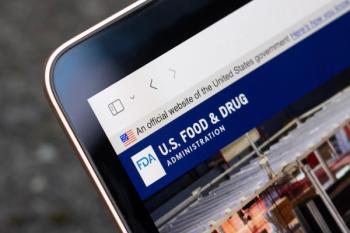
FDA Campaign Decreased Teen Smoking Initiation, but E-Cigs Continue to Entice Youth
The FDA’s anti-smoking campaign warning teens about “The Real Cost” of cigarettes was successful at preventing smoking initiation, according to the results of a nationwide survey. However, another study found that levels of e-cigarette use have increased among adolescents unlikely to start smoking cigarettes.
The FDA’s anti-smoking campaign warning teens about “The Real Cost” of cigarettes was successful at preventing smoking initiation, according to the results of a nationwide survey. However, another study found that levels of e-cigarette use have increased among adolescents unlikely to start smoking cigarettes.
The “Real Cost” campaign, which was the first federally funded tobacco education campaign when it began in 2014, aimed to prevent youth from trying cigarettes by reinforcing the central theme “Every cigarette costs you something.” The messages, which appeared on television, online, and in magazines, illustrated the loss of control due to nicotine addiction, the detrimental effects of smoking on one’s appearance, and the harmful mix of toxic chemicals present in cigarette smoke.
According to the
The study authors attributed the campaign’s success to the evidence-based development of its messaging and the high saturation across multiple channels of media aimed at this age group.
“These results demonstrate the effectiveness of a national campaign that focused on the harmful effects of smoking and delivered salient messages that resonated with youths,” they wrote. “Sustained tobacco education campaigns such as ‘The Real Cost’ can encourage US youths to abstain from tobacco use and accelerate progress toward future tobacco-free generations.”
However, not all recent research on teen nicotine use has been so encouraging. A
The study analyzed several psychosocial characteristics common among smokers, like living with a smoker or wearing clothing with tobacco company logos. The cigarette smokers among the 140,000 middle and high school students surveyed between 2004 and 2014 generally displayed these characteristics, but those who just used e-cigarettes were less likely to report these qualities. A predictive model using these characteristics identified less than 25% of the e-cigarette users as likely to be current smokers.
“The introduction of e-cigarettes was not associated with a change in the linear decline in cigarette smoking among youth,” the authors concluded. “E-cigarette—only users would be unlikely to have initiated tobacco product use with cigarettes.”
In May 2016, the
A
In the report’s preface, CDC Director Thomas R. Frieden, MD, MPH, cited the FDA’s “Real Cost” campaign as an example of a “hard-hitting media campaign” that could be adapted to prevent young people from trying e-cigarettes or moving from experimentation to regular use.
Newsletter
Stay ahead of policy, cost, and value—subscribe to AJMC for expert insights at the intersection of clinical care and health economics.








































